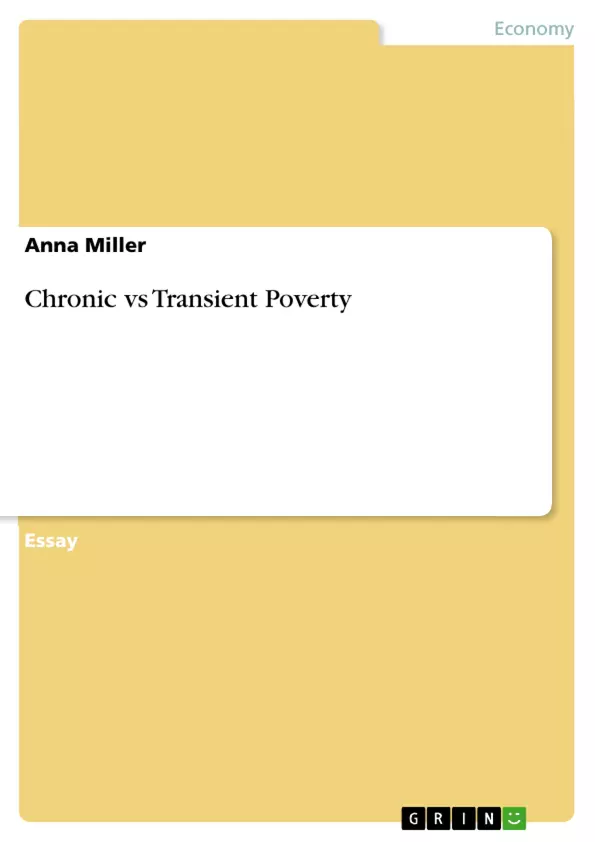Measuring poverty requires long time periods. Different from other macroeconomic variables like the GDP or the inflation rate of a country, which can be determined immediately and quite precisely at every point in time, it is not that straightforward to measure the level or degree of poverty. If we were to count all people below a certain poverty line at a particular time, we would know only half of the story behind those poor. Some one can fall below the poverty line in one period but climb above it in the next; on the other hand, some one can be persistently below the poverty line. Therefore it is not enough to take only one snapshot of the scenario but one has to take into account that people can be either chronically or transiently poor and that there is a lot of movement in and out of poverty. Commonly poverty is measured by looking at consumption of households rather than their incomes. The reason is that income in many cases is only difficult to capture precisely. A self-employed farmer may not have a monetary income but only his harvest, which can be only inaccurately translated into monthly incomes. However, his consumption of food is easy to determine and can also be properly reported. This aspect allows for tracking the households’ poverty level at their different states such that a farmer’s consumption before the harvesting season is most likely to be lower than after and thus his poverty level might change from below the poverty line to above it.This kind of household moves in and out of poverty depending on the season and therefore it is not enough to interview him only once. Figure 1 shows how income can develop over a time period of 5 units. Whereas individual 1’s income is persistently below the poverty line and it experiences permanent deprivation, individual 3 manages to escape poverty after the third period. On the other hand, individual 2’s income rises above the poverty line in period 2 but declines again after the third, which is the typical pattern of transient poverty. However, we do not know for sure what happened after the fifth and before the first period and therefore cannot draw unambiguous conclusions.
Considering the fact that poverty has two faces, one should analyse the shares of people that are chronically and transiently poor, respectively. Not only is this a correct measure of poverty but it also provides crucial information for the policymakers.
Table of Contents
- Introduction
- Chronic versus Transient Poverty
- Policy
- Concluding Remarks
Objectives and Key Themes
This paper explores the distinction between chronic and transient poverty, analyzing its implications for poverty reduction policies. It examines the prevalence of each type of poverty and investigates the effectiveness of different policy interventions in reducing them.
- The nature and measurement of poverty
- The distinction between chronic and transient poverty
- The role of income growth and income smoothing in reducing poverty
- The effectiveness of policy interventions in addressing different types of poverty
- The importance of understanding the dynamics of poverty for effective policy design
Chapter Summaries
The introduction establishes the importance of differentiating between chronic and transient poverty, arguing that it is essential for policymakers to understand these dynamics in order to design effective poverty reduction strategies. The paper then delves into different approaches to measuring the prevalence of chronic and transient poverty, drawing on examples from various countries like Pakistan, India, China, and South Africa.
The chapter on policy examines the effectiveness of two key interventions: income growth and income smoothing. The analysis shows that while income growth has a significant impact on reducing both chronic and transient poverty, income smoothing mainly reduces transient poverty. The conclusion emphasizes the importance of understanding the different types of poverty and tailoring policy interventions accordingly.
Keywords
This paper focuses on the key concepts of poverty, chronic poverty, transient poverty, income growth, income smoothing, poverty reduction policies, and policy effectiveness. It draws on empirical research findings from various countries to examine the prevalence of different poverty types and the impact of different policy interventions.
- Quote paper
- Anna Miller (Author), 2013, Chronic vs Transient Poverty, Munich, GRIN Verlag, https://www.grin.com/document/214529



